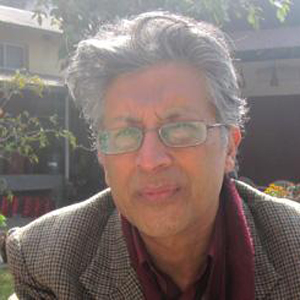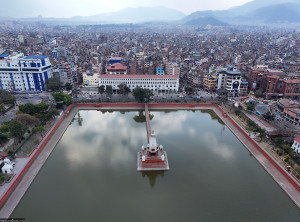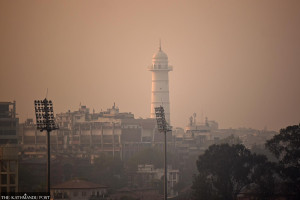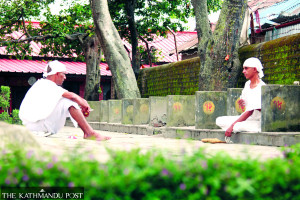Columns
Misplaced trust in a sovereign
The youngsters have little knowledge and experience of the tyrannical monarchy days.
Narayan Manandhar
Raja aau, desh bachau. These days monarchists are busy chanting this slogan at a high decibel level. For a non-Nepali speaker, the literal translation of the phrase is: 'Come back king, save my country'. However, the fact is that neither is the king going to come back nor does the country, sans the monarchy, need a saviour. A couple of factors can be identified for boosting the morale of monarchists. Obviously, the first one is choppy political waters. The failures of secularism, federalism and republicanism have provided ammunition for the rajabadis as Nepal’s monarchy represented a unitary, centralised Hindu state.
It is not only monarchists that are flogging a dead horse; even anti-monarchists are busy churning out propaganda materials. For example, Home Minister Ram Bahadur Thapa aka Badal reportedly said that the reinstatement of Parliament would help revive the monarchy while his recently-turned archrival Pushpa Kamal Dahal aka Prachanda has the opposite view: The dissolution of Parliament is a process towards reviving the monarchy. One can fairly imagine why royalists are so buoyed given the diametrically opposite views coming from die-hard, anti-monarchists like the Maoists. There are other leaders referring to Hans Andersen’s The Emperor’s New Clothes and seeing themselves as the kid having the courage to say 'the emperor has nothing on'. It sounds like the monster of the monarchy is still deeply ingrained in the minds of our political leaders.
Pure imagination
The second factor is the rise of the Bharatiya Janata Party and its Hindutva in India. Mixing politics and religion may work in some primitive societies; definitely, it is not beneficial in the long run. By visiting Hindu temples, shrines and deities and offering puja and lighting agarbatti, former king Gyanendra may be able to pull some sympathetic crowds and well-wishers; but it is pure imagination that the bunch of colourful people will help reinstate the monarchy in Nepal. Secularism was introduced not because Nepal is a multi-religious country, neither has it anything to do with the designs of foreigners; it is purely to get rid of the Hindu-based monarchy.
The other plank that the monarchy is portraying is extreme nationalism—one country, one dress, one language—as a basis for national unity. The problem with extreme nationalism is that it is against Hinduism. Hinduism demands the support of the Bharatiya Janata Party in India while Nepal’s nationalism is often equated with an anti-Indian stand. Former king Gyanendra himself has asserted, who knows, possibly for public consumption, that he is not interested in a monarchy that is reinstated with the support of or by India.
If the royalists have used the robe to project their religious stand and glamour, social media apps like TikTok are increasingly used to attract youngsters. These youngsters—the millennials (1981-96) and Generation Z (1997-2012), descendants of the elite class who enjoyed uninhibited access to power and wealth during the bad old days of Panchayat—are currently diehard fans of the monarchy. Having a single lion is better than thousands of jackals; the logic is understandable, but they forget that democracy works with thousands of jackals. The youngsters have little knowledge and experience of the tyrannical, autocratic monarchy days and are heavily sympathetic to the 'palace massacre'. In no way do they subscribe to the idea that the violence was regicide, matricide, fratricide, homicide and suicide all rolled into one.
Royal rallies
A couple of interesting features can be drawn from the pro-monarchy rallies. First, they have a unique style and also a status of organising street demonstrations—they start with no less than zooming motorbikes. Hopefully, some day, they might resort to plying BMWs and other vintage cars. Second, you often find yellow saffron-clad sadhus and saints holding trishul and damaru in their processions. This is to send the message that they are adherents of Hinduism and the ones to reinstate Nepal as the only Hindu kingdom in the world. Third, they carry the double triangle Nepali flag to give the impression of national unity, and prefer to wear the daura suruwal as the national dress.
Many became suspicious after the abrupt mass demonstrations by royalists that erupted during the first week of January, incited by the Oli government. It is now clear that some royalist lawyers are pleading on behalf of the Oli government before the Constitutional Bench over the writ petition filed against the untimely dissolution of Parliament. There is definitely some tacit support and rapport between the Oli administration and the royalists. Who knows, the country may already be treading on the road to a monarchy of a different kind. If the leaders are not talking of Shree Panch Gyanendra, are they talking of Shree Panch Oli or even Shree Panch Bada Maharani?




 23.39°C Kathmandu
23.39°C Kathmandu




.jpg&w=200&height=120)


.jpg&w=300&height=200)







